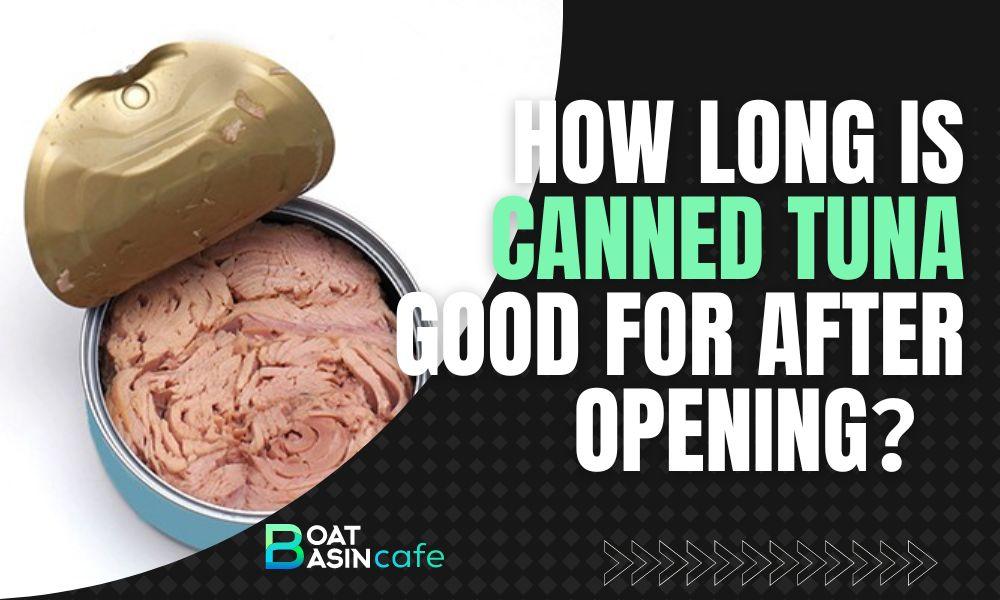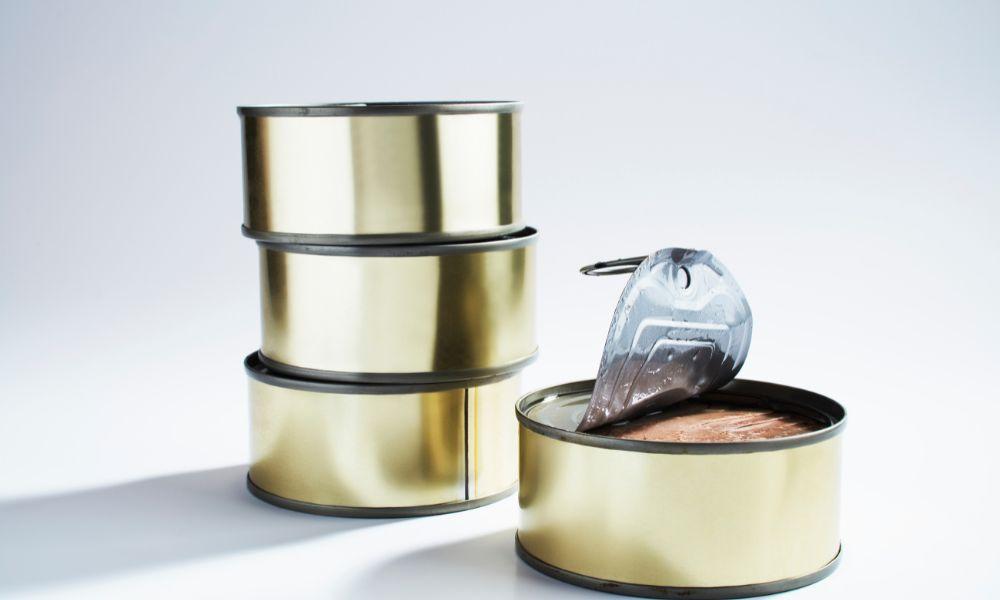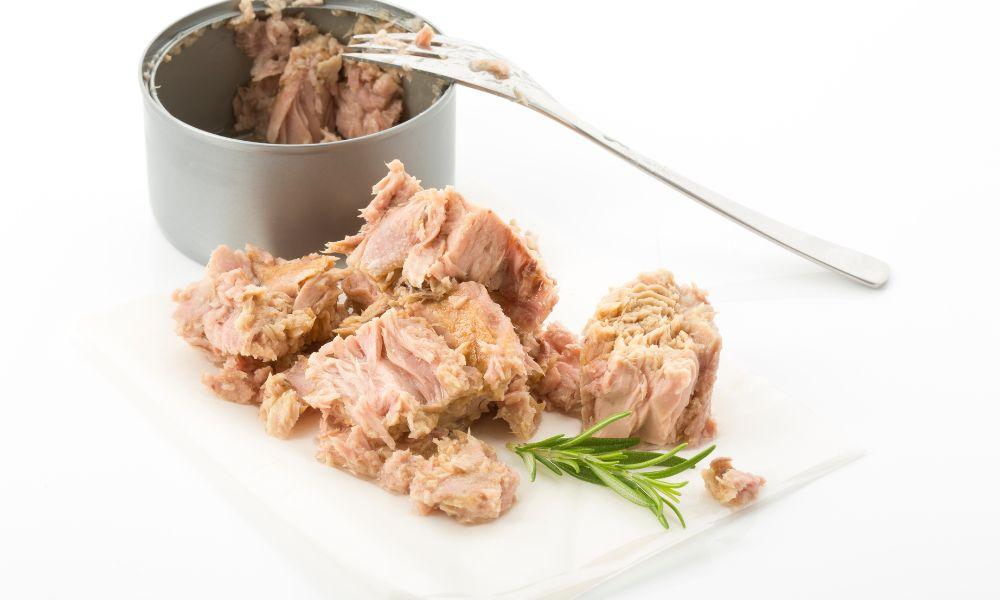Who doesn’t love canned tuna? It’s affordable, versatile, and packed with protein. One of the unrivaled conveniences of canned tuna is that it comes ready to eat and has a lengthy shelf life. But how long can you keep it after opening? What if you forgot to refrigerate it after using only a portion? Don’t worry, we’re going to dive into all these questions and more, so you can continue enjoying this tasty and nutritious ingredient safely.

Shelf Life of Canned Tuna
Before we explore the specifics of canned tuna, it’s essential to understand the concept of shelf life. In general, shelf life refers to the length of time a product remains suitable for consumption based on the quality, taste, and safety aspects.
Canned tuna, like many other canned foods, has an extended shelf life as the canning process preserves it by removing oxygen, creating a vacuum seal and inhibiting bacterial growth. But, after opening, the tuna is exposed to air and potential contaminants, which might reduce its shelf life.
Various factors affecting the shelf life of canned tuna include the storage conditions, the quality of the tuna itself, and any potential exposure to contaminants. For example, tuna stored in a pantry away from direct sunlight and excessive moisture will generally have a longer shelf life than tuna stored in damp and hot conditions.
Opened canned tuna will have a significantly shorter shelf life, depending primarily on its storage conditions, including temperature and potential exposure to contaminants. But fear not, as there are ways to preserve the freshness, quality, and taste of your leftover opened canned tuna.
Understanding Canned Tuna Labels
To ensure you’re consuming canned tuna safely, you should be well-versed with canned tuna labels and their significance. Keep an eye out for the following details on your canned tuna label:
- The brand and name of the product
- Net weight and drained weight
- Ingredients
- Nutritional information
- Date labels
It’s crucial to differentiate between “best by,” “use by,” and “sell by” dates on canned food labels. These dates often lead to confusion, but here’s what they mean:
- Best By – This date refers to the recommended time for consuming the product to ensure optimal taste and quality. Consuming canned tuna past this date might lead to a slight decline in taste and texture but isn’t necessarily a food safety concern.
- Use By – This date typically indicates the last day the product is guaranteed to be safe to consume. After this date, the safety and quality of the product are no longer guaranteed, and consuming it may pose health risks.
- Sell By – This date is mainly for retailers to know how long they should keep the product on the shelf before it becomes unsalable. It does not necessarily determine the safety or quality of the food for consumers.
When it comes to canned tuna, pay close attention to the date labels to avoid potential health hazards and store and consume them accordingly.
How Long Can Canned Tuna Be Stored After Opening

Now, coming to the core question: “How long is canned tuna good for after opening?” The answer might vary depending on the source, but generally, opened canned tuna should be consumed within 3-4 days if stored properly in the refrigerator. That being said, you can extend the shelf life of your opened canned tuna by storing it in proper conditions and ensuring minimal exposure to contaminants.
There are various factors that impact the shelf life of opened canned tuna, such as:
- The initial freshness and the quality of the tuna
- The method of preservation in the can (i.e., tuna in water, oil, or brine)
- The storage temperature
- Exposure to contaminants before and after opening
I once experimented with storing my opened canned tuna in a sealed, air-tight glass container with a thin layer of olive oil on top. Surprisingly, this little trick helped to keep the tuna fresher for a day longer than usual (although I don’t recommend taking any risks when it comes to food safety). If you’re careful with storage and handling practices, you’ll likely enjoy fresher and tastier opened canned tuna!
Signs of Spoilage in Canned Tuna
To avoid food poisoning, it’s essential to be aware of the common indicators of spoiled canned tuna. If you spot any of these signs, it’s best to discard the tuna immediately:
- Visible mold growth
- A sour or pungent odor
- Changes in color (e.g., turning brownish or excessively pale)
- The can has bulged or warped
- Formation of gas bubbles inside the can
Learning how to recognize changes in color, smell, and texture of canned tuna is crucial for your food safety. Trust your senses! If the opened canned tuna looks, smells, or feels off, it’s better to throw it away than risk food poisoning. Remember this handy tip: “When in doubt, toss it out!”
Proper Storage and Handling of Opened Canned Tuna

Here’s the fun part – let’s discuss some best practices for storing opened canned tuna to maintain its freshness and quality. Storing canned tuna appropriately prevents contamination and food spoilage while retaining its taste and texture.
- Transfer opened canned tuna to a clean, air-tight container – glass or plastic – and store it in the refrigerator.
- Ensure your refrigerator maintains temperatures of 40°F (4°C) or below.
- Keep a close eye on the 3-4 day timeline after opening and consume the leftover tuna within that window.
- Consider adding a bit of liquid (e.g., olive oil) to the container to help preserve the moisture and freshness of the tuna.
- Wash your hands thoroughly before handling opened canned tuna, and avoid cross-contamination by using clean utensils.
In addition to those tips, implementing safe handling practices to prevent contamination is imperative. This includes:
- Avoid using your fingers to grab tuna from the container – always use a clean utensil.
- Do not leave opened canned tuna at room temperature for more than two hours.
- Refrain from using the same container the tuna was in when it was inside the can – transfer it to a clean and suitable container.
By following these steps, you’ll extend the life of your opened canned tuna while maximizing its quality, taste, and safety.
FAQs
How long is canned tuna good for after opening?
Opened canned tuna should be consumed within 3-4 days if stored properly in the refrigerator. However, following proper storage and handling practices can help prolong its freshness and taste.
Can I consume canned tuna past its expiration date?
It depends on the date label. If the date is a “best by” date, you can still consume the tuna, but the taste and quality may be slightly degraded. However, if the date is a “use by” date, it’s better not to consume the tuna to avoid potential health risks.
How can I tell if canned tuna is spoiled?
Look for signs such as visible mold growth, a sour or pungent odor, changes in color, a bulged or warped can, or the formation of gas bubbles inside the can. Trust your senses and, when in doubt, discard the canned tuna.
Can I freeze opened canned tuna?
Yes, you can freeze opened canned tuna! Store it properly in an airtight container or a resealable plastic freezer bag, and use within 1 to 2 months for optimal taste and quality.
How does storage temperature affect the shelf life of opened canned tuna?
Storing opened canned tuna in temperatures below 40°F (4°C) can help prolong its freshness and shelf life. It’s essential to maintain consistent refrigerator temperatures to preserve the quality and safety of the tuna.
Are there any risks in consuming expired canned tuna?
Consuming expired canned tuna, especially if it’s a “use by” date, could expose you to potential health risks, including food poisoning or an upset stomach. Always be vigilant about date labels and the appearance, smell, and texture of canned tuna to avoid any complications.
Conclusion
To sum things up, the key takeaway here is that proper storage and handling practices are crucial to maintain the freshness, taste, and safety of opened canned tuna. That means: understand the date labels, consume opened canned tuna within 3-4 days by storing it in appropriate conditions, and remain vigilant for signs of spoilage. Armed with this knowledge, you can now safely enjoy your canned tuna in various delicious dishes while ensuring food safety and minimizing waste.
For more information on how long opened canned tuna can be kept in the fridge, click here.
References:
- U.S. Food and Drug Administration – Selecting and Serving Fresh and Processed Seafood Safely: https://www.fda.gov/food/buy-store-serve-safe-food/selecting-and-serving-fresh-and-processed-seafood-safely
- Foodsafety.gov – Storage Times for the Refrigerator and Freezer: https://www.foodsafety.gov/food-safety-charts/cold-food-storage-charts
- EatByDate – How Long Does Tuna Last? Shelf life, Storage, Expiration: https://www.eatbydate.com/proteins/seafood/tuna-shelf-life-expiration-date/
- USDA Food Safety and Inspection Service – Food Product Dating: https://www.fsis.usda.gov/food-safety/safe-food-handling-and-preparation/food-safety-basics/food-product-dating
- Livestrong.com – Does Canned Tuna Go Bad if Not Refrigerated After Opening: https://www.livestrong.com/article/514833-does-canned-tuna-go-bad-if-not-refrigerated-after-opening/








